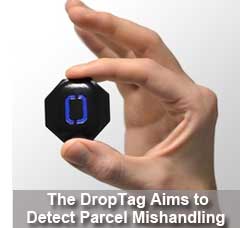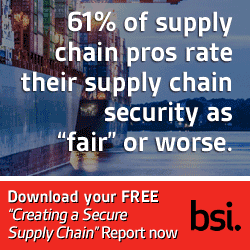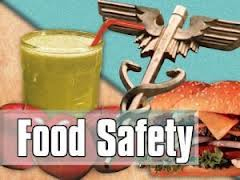 |
March 7, 2013 - Supply Chain Newsletter |
 |
| FEATURED SPONSOR: BSI |
 |
|
 |
|
|||||||||||||||||||||||||||||||||||||||
The "Perfect Logistics" Train has Left the Station
|
||||||||||||||||||||||||||||||||||||||||
| GILMORE SAYS: |
"It won't take the parcel carriers long to figure out it doesn't make sense to take a package to a consumer that is likely to be refused." WHAT DO YOU SAY? |
I accept all that of course, and probably could be talked into "almost perfect logistics" or something, except that doesn't sound as good, and I really believe in many areas we will in fact start to reach perfection, or darn close to it.
I had the chance to present on this topic at the Motorola Solutions reseller/VAR conference in Las Vegas a couple of weeks ago, an event the forced me to review my thinking a bit, and update the original ideas and examples I had with a few fresh ones, which I will also discuss here.
As you may know, item-level RFID in the retail apparel sector is moving along nicely, albeit somewhat quietly, with programs at American Apparel, Macy's, Walmart, and JC Penney (though the latter has screeched to something of a halt with its overall business woes, and it will be interesting to see what happens if JC Penney CEO Ron Johnson is shown the door, which seems practically inevitable to me right now). Many others retail programs are said to be in the works, notably Kohl's and Gap Stores.
While the retailers are pushing this largely for in-store reasons (accurate perpetual inventories, cycle counts in minutes rather than hours, etc.), a few smart manufacturers are figuring out that as long as they have to put RFID tags on the merchandise, they might as well use them internally too (if anyone sees the parallel to how bar coding evolved in the 1990s, you get an A for the day).
Dean Frew, CEO of Xterprise, says his company has been putting split case "auditing" systems in a number of apparel vendors. To greatly simplify, the system knows what it is supposed to be in the box (they are items individually picked and packed, as is common for replenishment orders in the soft goods industry, and the cartons are usually destined for a specific retail store by way of a retailer DC), and that completed carton is then passed through an RFID reader array to compare what is there versus what is supposed to be.
Frew tells me most of these vendors found quite a surprise. The accuracy rates of those mixed cases are often not at the 99%+ plus level most had thought, but more like 98% - and that is a big difference. If you know how this works, few vendors or retailers if any check every case for accuracy. There is usually a selective audit at the vendor DC and maybe the receiving side, and if a large number of errors are found, there may be a more comprehensive check. In general, however, most cartons, 100% accurate or not, are shipped from the vendor to a retailer DC, where they are flowed right through to an outbound door with a truck going to the appropriate store.
Store personal do not check the carton contents to see if they match what is supposed to be in that box. They simply put the merchandise away, allowing the accuracy error right into the system because the inventory count is updated with what is supposed to be in the carton, not what actually is. That error can later cause out of stocks and other problems until the retailer finally adjusts the inventory after a cycle count (and we assume just writes the missing inventory off, probably labeling it shrinkage or something). And by the way, a manual, non-RFID cycle count process is likely to create as many errors as it fixes.
So back to the vendor, where the errors all started. With the RFID auditing process, 100% of the errors are caught before the carton is shipped, and 100% of those cartons are fixed. Carton content accuracy, and hopefully along with it ASN and labeling accuracy, becomes in fact perfect. And that will save retailers a lot of costs and reduce out-of-stocks, and ultimately help vendor sell-through at the store as well. Naturally, this will lead the vendors to push the process back up into the picking process itself, so there are no inaccurate boxes to fix.
Example 2: This is a little more theoretical, but we were struck a few weeks ago by the announcement of a new product called the DropTag, developed by Cambridge Consultants. In great summary, a DropTag contains a sensor that records how an ecommerce package has been treated along its journey, with an associated smart phone app that allows the consumer or business to scan the tag when the delivery person shows up and see, for example, if the package has been dropped. (See Quest for Perfect Logistics Continues as New Chip Tracks Whether Box has Been Mishandled on Way from E-Tailer.)
 If yes, for certain categories of products (electronics, fragile items, etc., which are likely to be the only ones to receive a tag from the e-tailer to begin with), the consumer may decide to refuse the shipment and hand it back to the UPS or FedEx driver. The company says it also plans to later add a temperature sensor, which could tell a consumer whether the prescription from drugstore.com was exposed to high or freezing temperatures, for example.
If yes, for certain categories of products (electronics, fragile items, etc., which are likely to be the only ones to receive a tag from the e-tailer to begin with), the consumer may decide to refuse the shipment and hand it back to the UPS or FedEx driver. The company says it also plans to later add a temperature sensor, which could tell a consumer whether the prescription from drugstore.com was exposed to high or freezing temperatures, for example.
I have no idea whether this idea will be attractive to e-tailers, or how the parcel companies would react to such a development. (For all I know, they may refuse to accept a package with a DropTag). But let's assume for the moment it does gain some traction.
Well it won't take the parcel carriers long to figure out it doesn't make sense to take a package to a consumer that is likely to be refused. So they will instead read the DropTags themselves along the way, and likely send the parcel back if its handling has exceeded whatever the standards are.
Of course, the carriers will then increasingly be able to determine the where, when and who of the damaging handling. That visibility will naturally lead them to adjust process, equipment and personnel as needed to significantly reduce the problems – getting us a lot closer to logistics perfection.
The DropTag itself may never see the light of day, but I hope you get the point. The array of visibility tools (bar code, RFID, wireless, video, GPS, sensors, etc.) continues to get cheaper, easier to deploy, and smarter, and I predict we will see increasing numbers of these kinds of examples such as the two I presented today. I mean, how long will it really be before we can eliminate the scourge of inaccurate pick-pack cartons, as some apparel vendors are already doing?
And if the apparel supply chain does it, won't it almost force other supply chains to go the same way? (Remember, cans of soup and such, where there would be a huge issue with tag costs, are rarely moved in less than full case quantities).
We may never actually reach the town of Perfect Logistics, but it doesn't matter. That's where the train is headed.
What are your thoughts on these two new examples of Perfect Logistics trends? Is there anything along these lines your company is doing or investigating? Let us know your thoughts at the Feedback button (email) or section (web form) below.
![]()
| View Web/Printable Version of this Page |
|
|
|
YOUR FEEDBACK
More feedback this week on our two First Thoughts columns by SCDigest editor Dan Gilmore on 2013 Priorities: Mapping and Modeling Your Supply Chain Part 1 and Part 2.
That includes our Feedback of the Week from Greg Schlegel of Lehigh University, who says 95% of all manufacturers do NOT map their supply chains.
That letter, plus other very good Feedbacks, is published below. More next week.
Feedback of the Week - On Mapping and Modeling the Supply Chain:
Excellent article. We at Lehigh University and our Supply Chain Risk Consortium are violently in agreement with you on both threads. We teach Supply Chain Risk Management at the graduate level and are supporting this emerging discipline of supply chain excellence with global workshops, education through APICS' new SCRM Certificate of Achievement and an upcoming book for the classroom and more. Through four years of teaching and global workshops, it seems 95% of all manufacturers do NOT map their supply chains! We are advocating SC mapping be one of the First exercises one champions, if one plans to develop a solid SCRM journey to Identify, Assess, Mitigate and Manage risk. We are also advocating new SCRM metrics such as TTR (Time-to-Recovery), VaR (Value at Risk) and Resiliency Indexes. In our new 21st Century Supply Chain Maturity Model, Predictability is the next stage in this risk journey, after Visibility. This means "Stress Testing" one's supply chain with What-if scenarios using Probabilistic Models, NOT deterministic methods. Looking forward to the next installment on Modeling. Very exciting times in the world of global supply chains and risk management. Greg Schlegel |
||
| More On Mapping and Modeling the Supply Chain: | ||
While I think a holistic SC model is possible, I believe that companies are unable to take a full modeling approach as they are consistently caught in OPERATIONS decisions and, if able to, move into TACTICAL decision making (illustrated at http://www.business2community.com/strategy/ask-the-chairman-is-it-possible-to-create-one-comprehensive-model-of-the-supply-chain-0418476). Thus, STRATEGIC decisions are unable to be fully attended to.
Once employees have suitable knowledge regarding the types of data they must concern themselves with (i.e. the variables) and, just as every bit important, are empowered to have access to the applicable data, will SC models effectively be implemented. One thought I would have is what happens when models go wrong? I would theorize that incomplete and inaccurate models would lead to disastrous business decisions. This may explain hesitancy by some governing boards to embrace any type of model. I very much look forward to future articles. Justin Jagger
|
||
Thanks for underscoring the importance of mapping supply chains. On my supply chain courses it is the first learning activity for the delegates after the introduction. The charts produced then go on the wall and stay there for the rest of the course. David MacLeod
|
SUPPLY CHAIN TRIVIA ANSWER
Q: How many active container ships are currently sailing the oceans blue?
A: Exactly 4995, according to the latest data from the analysts at Alphaliner. That total is led by Maersk Line, with 594 vessels in its fleet.
| © SupplyChainDigest™ 2003-2013. All Rights Reserved. SupplyChainDigest PO Box 714 Springboro, Ohio 45066 |
POWERED BY: XDIMENSION
|







